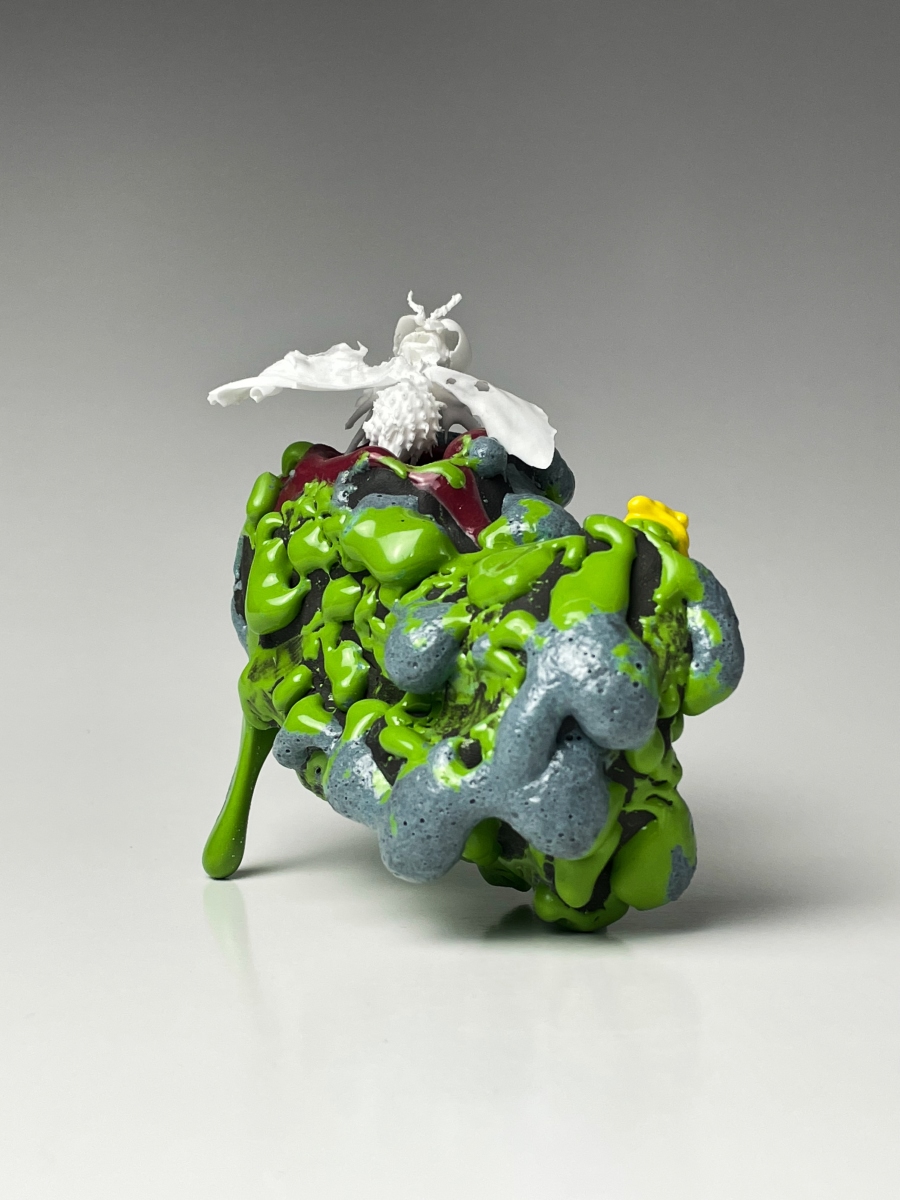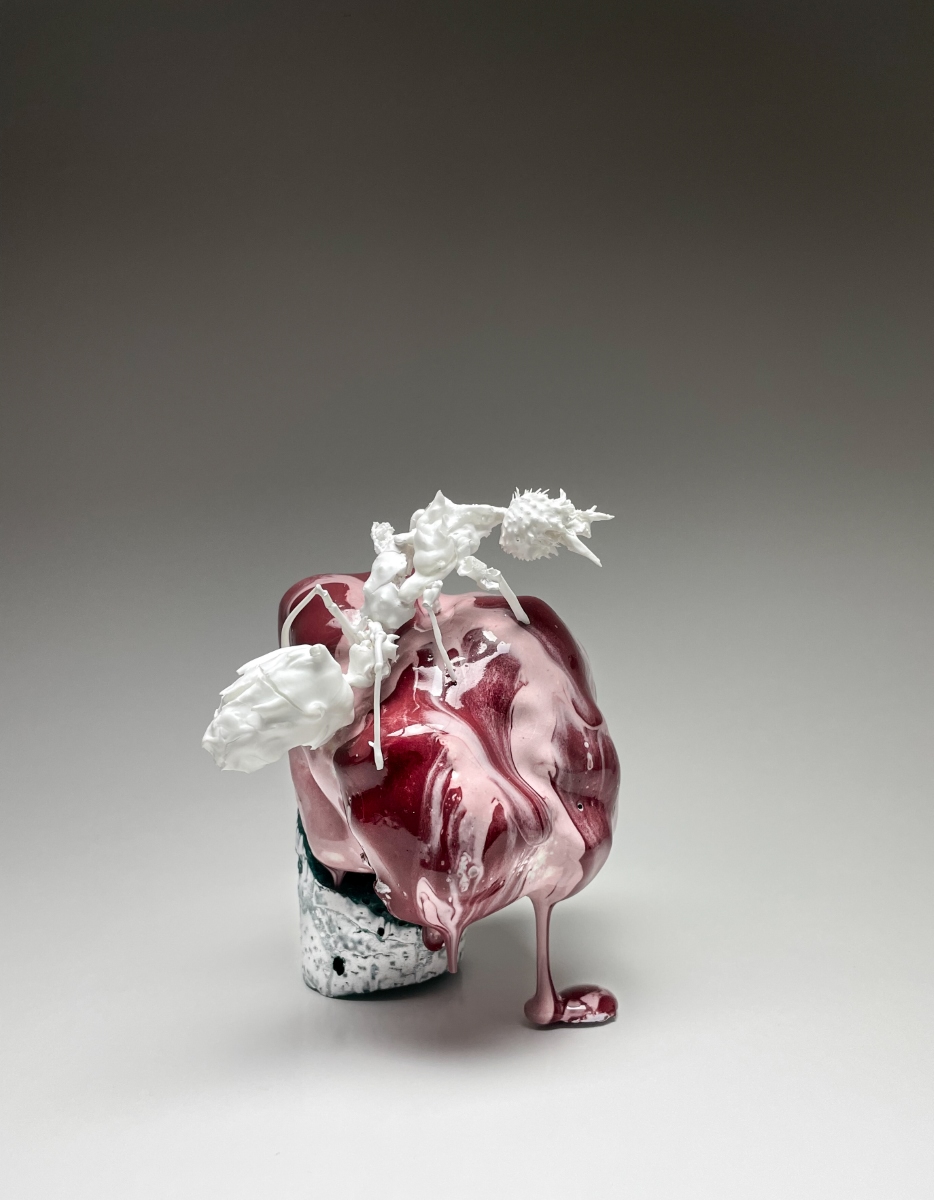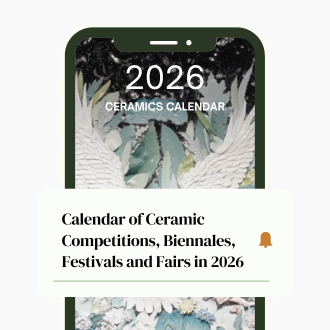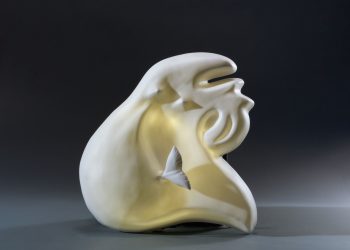Mahala Hill is a contemporary ceramic artist based in regional New South Wales, Australia. Mahala’s work is deeply influenced by her upbringing in the diverse landscapes of rural Australia, where sprawling bushland meets vibrant coastlines along the Southern Ocean. Her profound connection to the environment serves as a primary source of inspiration for her artistic practice.
Having discovered her passion for ceramics, Mahala completed her Bachelor’s Degree in Visual Arts with a specialisation in Ceramics at the Australian National University School of Art and Design in 2015, followed by First Class Honours in 2017.
Mahala Hill is known for her innovative approach to ceramics, characterised by experimental techniques and a discursive practice. She engages in material exploration, allowing it to guide her ideas and extend her conceptual framework, often raising questions or dilemmas for further exploration. Recently, Mahala has been exploring themes of curiosity, wonder, beauty, death, and the apocalypse, utilising these motifs to shed light on pressing environmental issues.
Central to Hill’s practice is the concept of the ‘burn out,’ a transformative process where plant matter is encased in clay and then incinerated, leaving behind a haunting, shell-like form. This ‘burn out’ serves as a poignant metaphor for the cycles of life and loss within the environment. Through this process, Hill explores both past and present environmental challenges, inviting viewers to contemplate the fragility and resilience of our natural world.
Mahala has exhibited widely within Australia in both group and solo settings. Her work is held in several public collections including City of Townsville Art Collection, Macquarie Group Collection, The ACT Legislative Assembly Art Collection, Castlemaine Art Museum and private collections within Australia and Singapore.
Visit Mahala Hill’s website and Instagram page.
Featured work
Selected works, 2017-2023


Waste environments. An apocalyptic vision of the new normal.
Spectral growths spawn from contaminated forms, skeletal insects cling to unnatural environments, establishing their new world order within the post-apocalyptic landscape.
Mahala’s sculptures delve into a world post environmental demise. Her works confront the anthropocentric tendencies ingrained in contemporary society, urging viewers to contemplate the environmental impact of human existence.
From fictitious mutated plants to detailed representations of endangered Australian insects the works are grounded in materiality and form, centring around reconstructed Bone China burnouts. A burnout is the remnants after plant matter is coated in clay and incinerated. The residual material is a ghostly, shell-like spectre, simultaneously evoking traces of a life and a loss. The burn outs are inherently inscribed with fragility: the fragments, some under a millimetre thick, are cold white in colour and fluctuate in texture causing variance in translucency. This process of directly creating a brittle clay form from transformed organic matter is a crucial element underpinning Mahala’s exploration of what happens, and what is currently happening in the environment.
Each artwork possesses its own identity, captured through experimental and often unrepeatable glaze surfaces. The use of colours that reference both the natural and artificial speak to the idea of the waste being forced onto the environment and engulfing landscapes. Embracing uncertainty in the final fired objects, Mahala’s method of working with glazes embraces unpredictability, maintaining a raw spontaneity in the finished pieces. Responding to the experimental outcomes is as integral to the artistic process as the experimentation itself, achieving a delicate equilibrium between deliberate intention and uncertainty.
Within her dystopian vision, Mahala subverts the common notion that insects are inconsequential to human life, portraying them as the “soul” survivors of environmental devastation. Rather than adopting a wholly pessimistic outlook, she infuses her work with a glimmer of hope through their resilience. Despite insects’ ability to adapt, the works serve as a call to action, reminding audiences that there may still be time to prevent further species endangerment.















